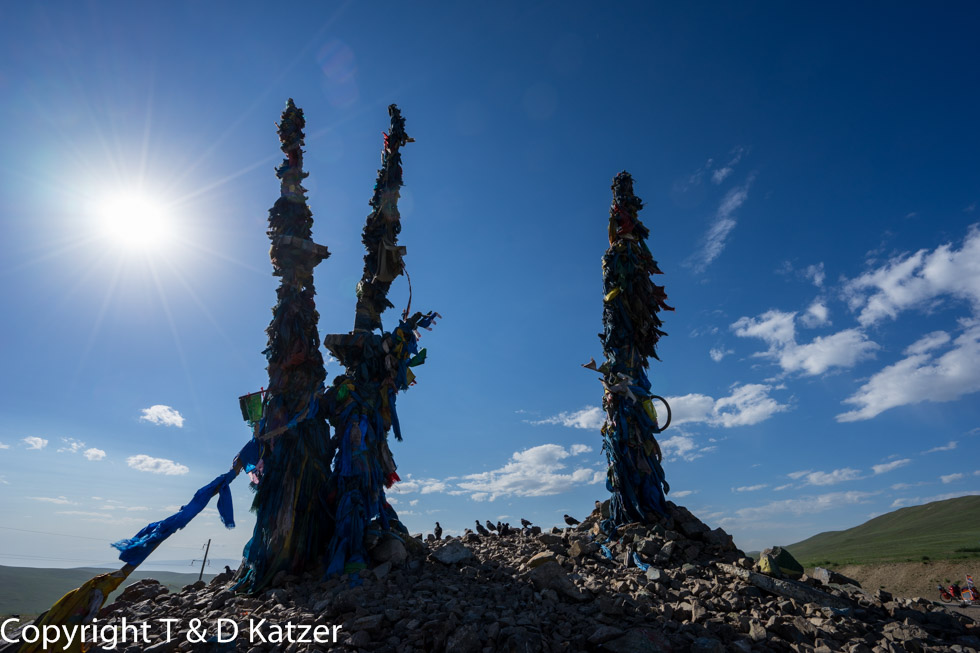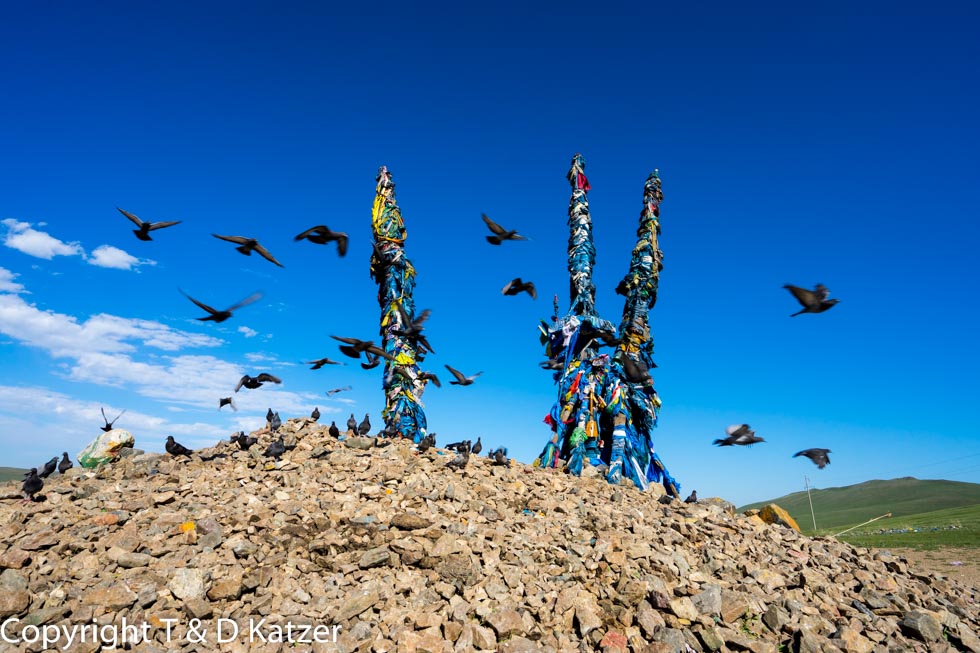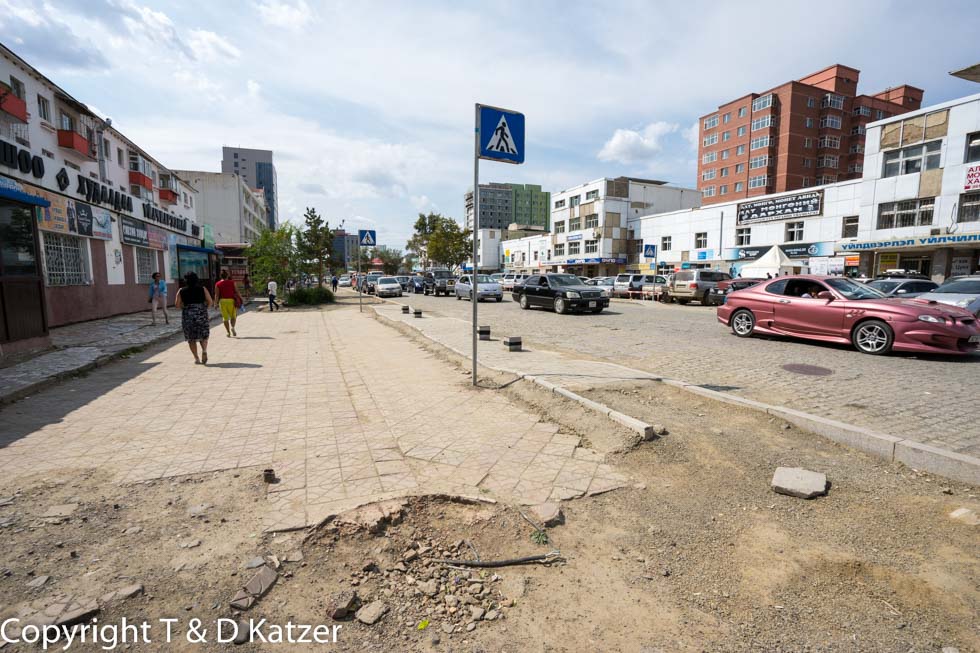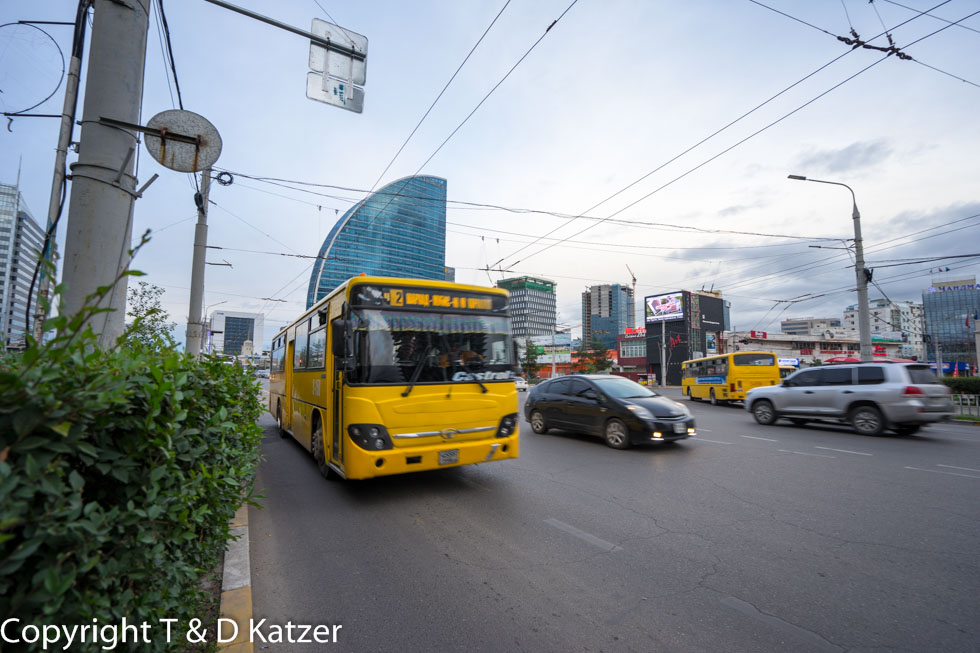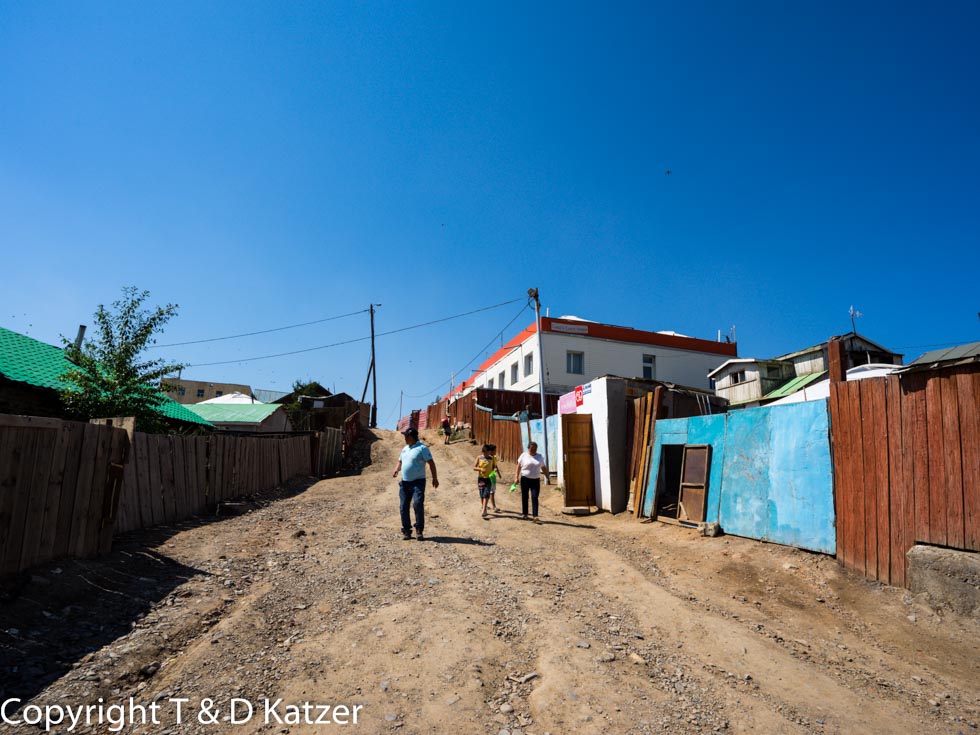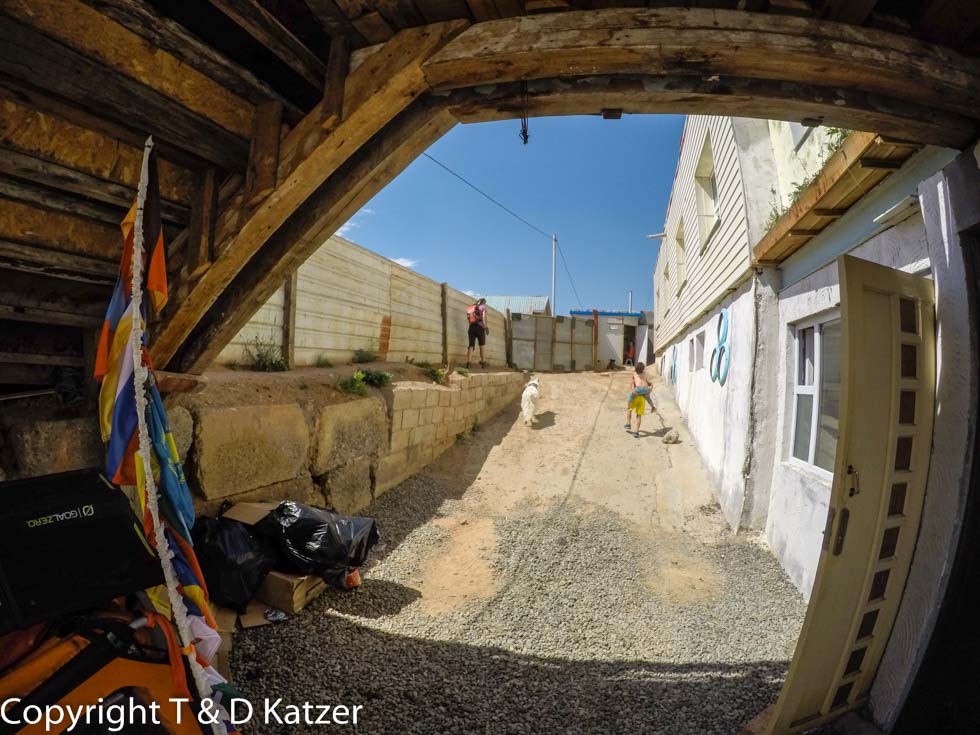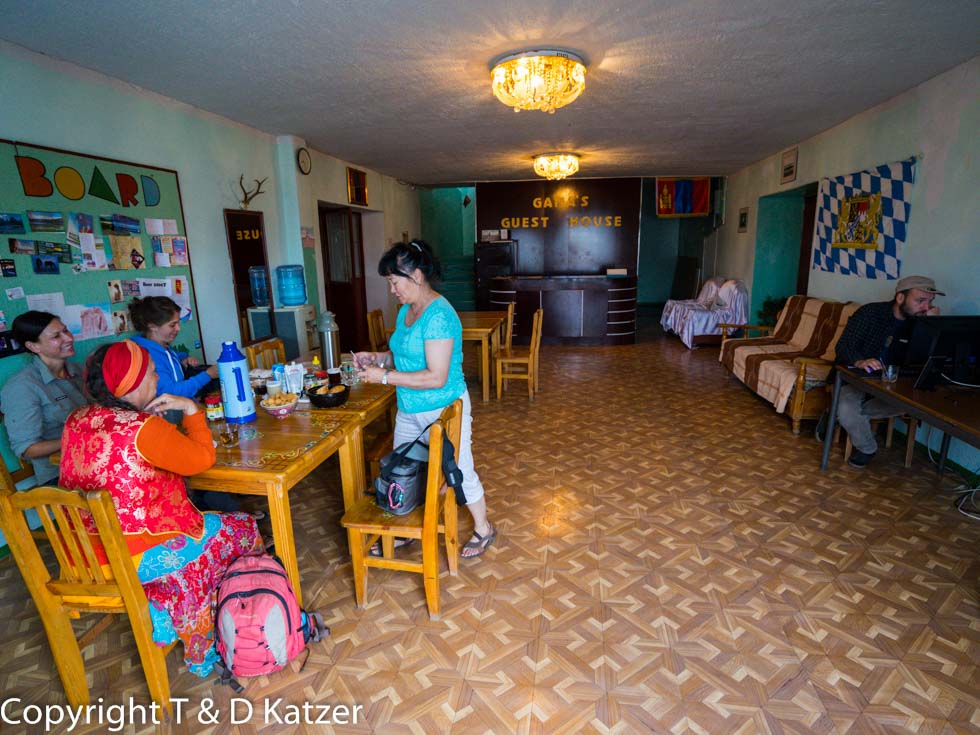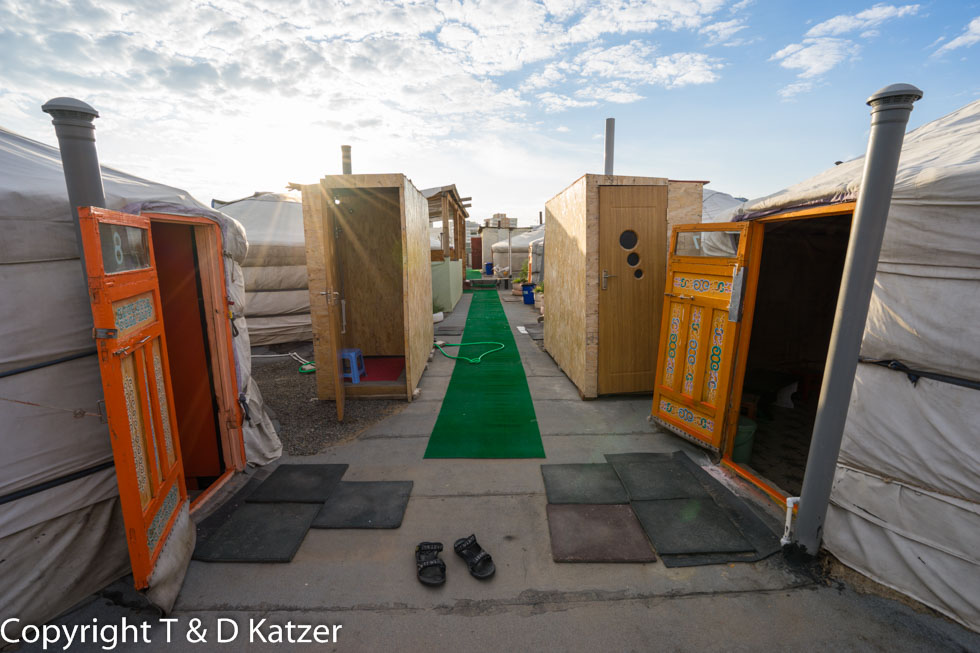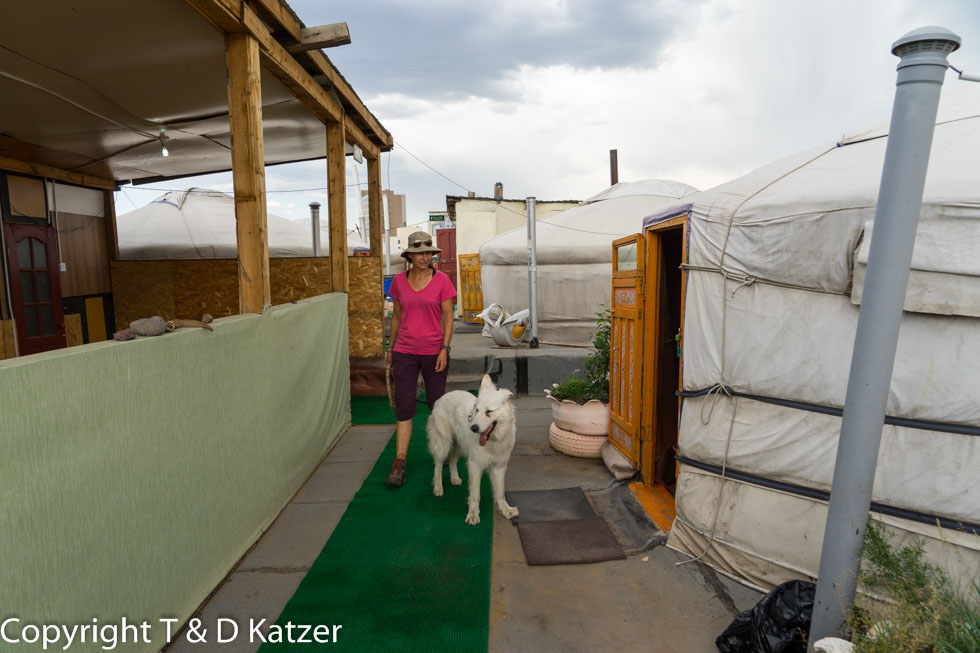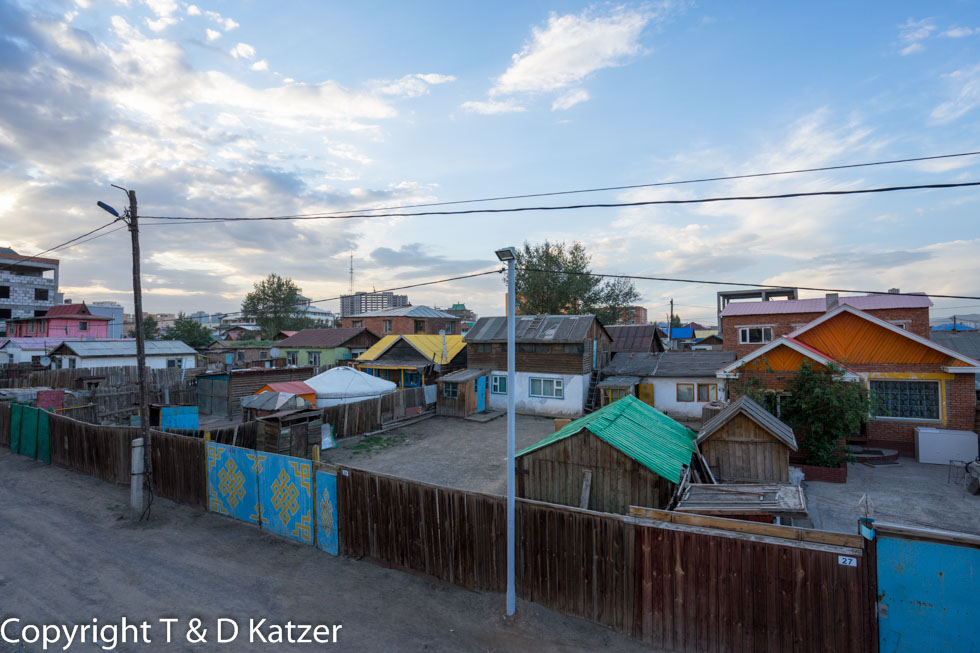
In the center of hell
N 47°55'08.9'' E 106°53'50.1''
Date:
10.8.2015
Day: 43
Country:
Mongolia
Location:
Ulan Bator
Latitude N:
47°55’08.9”
Longitude E:
106°53’50.1”
Kilometers per day:
61
Total kilometers:
8.563
As the crow flies:
49
Aver. Sib.
20.1 km/h
Maximum speed
41 km/h
Travel time hrs
3:00
Ground conditions:
Asphalt
Maximum height:
1,600 meters
Sunrise:
06:38 a.m.
Sunset:
9:17 pm
Temperature day max:
53 degrees in the sun
Departure:
8:00 a.m.
Arrival time:
1:00 p.m.
(Photos of the diary entry can be found at the end of the text).
Since 8:00 a.m., the rubber has been rolling over the partly rough, potholed asphalt again. Traffic has increased significantly. Around midday we reach the great Ovol before Ulan Bator. As custom demands, we walk around three times and wish ourselves a safe journey through the metropolis with its crazy and aggressive traffic. This is exactly where Tanja had vomited several times years ago due to overexertion and a spoiled meal. In contrast to today, the descent into the city was a dangerous undertaking for them in very cold weather and strong headwinds. “Are you ready?” I ask. “Yes,” she answers in a great mood. “Then let’s hurtle down.” “But not too fast!” she warns me. “Don’t worry,” I reply and let my heavy Roadtrain roar into the dip. We pass the large toll station where every driver has to pay to use the often poor roads. Only us cyclists are waved through in a friendly manner. On the outskirts of the city, we come across a monastery and a large Buddha statue. We linger for a while and continue our journey in high spirits. Then there it is, the manifest ugliness of a dusty, ever-expanding metropolis that was built around a monastery in 1649 under the name Urga and was the permanent seat of the head of Lamaism in Mongolia from 1778. Today’s Ulan Bator is a city that has the sad distinction of having some of the dirtiest and most toxic air of any major city in the world in winter. Here, people are dying by the dozen as a result of the bad air. Although it is summer and the surrounding households do not have to heat their homes, smog lies over the metropolis. Monstrous power stations spew out nasty-looking smoke that covers all the houses, buildings and streets like a suffocating blanket. Even though we have been here a few times in recent years, I am always shocked by the sight of Mongolia’s political and cultural center. Since 1996, when we were here for the first time, the once sleepy and forgotten little town has developed into a stinking, hectic industrial site where almost all exhaust fumes are blown unfiltered into the atmosphere and people’s lungs and the waste water is pumped into the Tuul River. In this way, the Tuul reaches ten times the permissible amount of pollutants and contaminates the drinking water in the hinterland.
We glide along the four-lane road at around 25 km/h. The traffic rushes past us at high speed, incessantly kicking up dust. After a short time, the exhaust fumes make it difficult to breathe. Even if most drivers treat us with respect, they have a driving style that would make even an old sow cringe. Above all, we are surprised by the mercilessness and ruthlessness they display. Two-lane roads are declared three-lane roads. There is honking and swearing, cutting in and braking at the very last second. If you enter a traffic circle, you only have the chance to force your way in. No one gives the other a centimeter’s head start. A driver shows mercy, brakes his vehicle and waves us through. At an intersection, a policeman tries to control the rolling heaps of metal by incessantly trilling and waving his baton. It can’t be long before someone like that dies of lung cancer, I think to myself, just as I did when we were making our way through this city. Luckily we are not out and about in this madness during rush hour, because that would be like playing Russian roulette.
We reach the center of traffic hell safely. “And where is Gana’s guesthouse supposed to be?” I ask Tanja, who has saved the address in her smartphone. “Let’s stop there!” she calls, whereupon I steer my bike into a dirty, torn-up parking lot. “It can’t be far now,” she says and asks a few passers-by. After some time, she received a usable answer. We push our bikes across the crosswalk and cross the road reasonably safely, even though a few drivers don’t give a damn that the pedestrian lights are green. After venturing back into the voracious stream of traffic, we discover a house on a hill with a few yurts stretching their backs into the gray sky. “It’s up there!” exclaims Tanja delightedly. Unfortunately, there is no way to cross the main road from here, so we are pulled along by the flow of traffic until we reach a crossroads. “Which of the many traffic lights is for left-turners?” I ask Tanja. She just shrugs her shoulders. One of the drivers seems to understand us and points up to the right. “Ih Bajrlalaa”, (thank you very much) I say thank you. When we recognize green, we speed off in turbo mode. We work our way through the stinking metal boxes, our senses are sharpened to the extreme, up and down a hill, but unfortunately there is no road leading to the guesthouse. “We should have been there by now!” I curse. A passer-by points to the opposite side of the street. His statement is confirmed by a Mongolian woman. Once over there, we ask our way through and end up in a narrow, unpaved alley. Prayer flags wave in the hot wind. Dust blows over the dusty dirt road that you wouldn’t expect to find in the center of a big city. We smell incense and hear the bells of a monastery. Suddenly we are beamed into another age. “That’s the wall of the Gandan monastery, isn’t it?” I ask in surprise. We slowly roll past the most important monastery in Ulan Bator, which was founded in 1727. If I wasn’t so stressed from the city trip, I could enjoy this moment. Very few cars bump past on the small lane. People run back and forth and before we know it we are standing in front of the wooden main entrance to the monastery. Nothing remains of the destruction that took place in 1937 in connection with anti-Buddhist activities. “Where is Gana’s guesthouse?” we ask a ticket seller. Onlookers quickly gather around us. They form a veritable circle around us, making it even harder to breathe in the heat. There is wild discussion until one of the men agrees to take us there. As we stand in front of a dilapidated, red tin fence, we thank the man. Ganas Guesthouse is written above the entrance. A woman opens a rickety gray metal gate for us. We push our e-bikes inside. As soon as the gate closes behind us with a loud squeak, we are glad to have found a safe nest in the middle of the madness of a terrible city. Od, the young owner, shows me a dark room. Building rubble laughs at me through the window. “You can also move into a yurt on the roof,” he says after reading the look on my face. In fact, there are genuine Mongolian yurts standing on the roof in the middle of Ulan Bator, brooding in the blazing sun. Although it is very warm inside, I immediately feel at home, remembering our wintering with the reindeer nomads. While our bikes and trailers find a cool and safe place on the first floor, we move into our Mongolian dwelling, where we will spend the next few days preparing everything else for the upcoming journey to China.
The live coverage is supported by the companiesGesat GmbH: www.gesat.com and roda computer GmbH www.roda-computer.com The satellite telephone Explorer 300 from Gesat and the rugged notebook Pegasus RP9 from Roda are the pillars of the transmission.
